
Data Science in Finance and Economics
metrics 2024
Catalyzing insights for a data-driven future in finance and economics.
Introduction
Data Science in Finance and Economics is a pioneering journal published by the American Institute of Mathematical Sciences (AIMS), devoted to the intersection of data science with the fields of finance and economics. Established as an open-access journal since 2021, it aims to disseminate high-quality research that unravels complex financial phenomena and economic models through innovative data-driven methodologies. With a commitment to advancing knowledge in this rapidly evolving discipline, the journal encourages submissions that encompass theoretical studies, empirical research, and application-based articles from both academia and industry. While the journal is relatively new, its potential to significantly influence the discourse in finance and economics is profound, offering researchers, professionals, and students an invaluable resource to stay abreast of current trends and methodologies in data science. For access to cutting-edge research and insights, visit AIMS and contribute to the ongoing conversation in this essential field.
Metrics 2024
 -
- 1.30
1.30 1.30
1.30 -
-Metrics History
Rank 2024
IF (Web Of Science)
JCI (Web Of Science)
Quartile History
Similar Journals
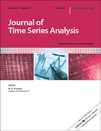
JOURNAL OF TIME SERIES ANALYSIS
Unlocking the patterns of data through rigorous analysis.JOURNAL OF TIME SERIES ANALYSIS, published by Wiley, is a premier academic journal dedicated to the field of time series analysis, serving as a pivotal resource for researchers, professionals, and students in applied mathematics and statistics. With a strong commitment to advancing scholarly knowledge since its inception in 1980, the journal focuses on innovative methodologies and applications in time series data, highlighting its relevance in various domains, including economics, finance, and environmental studies. Although the journal currently does not offer open access, it maintains a robust reputation, reflected in its 2023 Q1 and Q2 quartile rankings in applied mathematics and statistics, respectively. The contributions published in this journal are instrumental for advancing theoretical frameworks and practical applications in data analysis. Stay informed of cutting-edge research and methodologies by engaging with the JOURNAL OF TIME SERIES ANALYSIS, which is accessible through various academic databases.
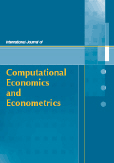
International Journal of Computational Economics and Econometrics
Exploring the intersection of technology and economic theory.International Journal of Computational Economics and Econometrics is a peer-reviewed academic journal published by INDERSCIENCE ENTERPRISES LTD, focusing on the intersection of computational methodologies and economic analysis. With an ISSN of 1757-1170 and an E-ISSN of 1757-1189, this journal provides a crucial platform for researchers and professionals interested in innovative computational approaches to tackle real-world economic problems. While it currently does not operate under an open-access model, the journal is committed to advancing knowledge in its field, particularly as it occupies a vital niche within Computer Science Applications and Economics and Econometrics, ranking in the Q4 quartile for both categories as of 2023. Covering the period from 2017 to 2024, the journal aims to foster interdisciplinary collaboration and encourage the integration of advanced computational techniques into traditional economic theory and practice. As it continues to evolve, the International Journal of Computational Economics and Econometrics remains essential for academics and practitioners looking to stay at the forefront of technological innovations in economics.
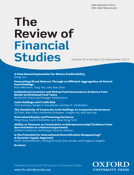
REVIEW OF FINANCIAL STUDIES
Connecting Academia and Practice in FinanceREVIEW OF FINANCIAL STUDIES, published by Oxford University Press Inc, stands as a premier academic journal in the realms of accounting, economics, and finance. With an impressive Impact Factor that reflects its high citation rates and broad influence, this journal, with an ISSN of 0893-9454 and E-ISSN 1465-7368, is considered a cornerstone for researchers, academics, and professionals seeking to contribute to and stay updated on groundbreaking developments in financial studies. Since its inception in 1996, it has established a robust reputation, consistently ranking in the Q1 category across multiple disciplines, highlighting its elite status in the global academic landscape. The Scopus rankings further reinforce its importance, positioning it at the forefront of business, economics, and finance research. While the journal is not open access, it offers vital insights and comprehensive studies that foster a deeper understanding of contemporary financial issues and methodologies. Located in the United Kingdom, the REVIEW OF FINANCIAL STUDIES is an essential resource for those aiming to advance their knowledge and research in this dynamic field.

JOURNAL OF BUSINESS & ECONOMIC STATISTICS
Exploring the Intersection of Business, Economics, and StatisticsJOURNAL OF BUSINESS & ECONOMIC STATISTICS is a premier academic journal published by Taylor & Francis Inc, dedicated to disseminating high-quality research in the fields of business, economics, and statistics. With an impressive impact in the academic community, the journal maintains a distinguished Q1 ranking across various categories including Economics and Econometrics, Social Sciences (miscellaneous), and Statistics and Probability, showcasing its relevance and influence in contemporary research. Since its inception in 1983, the journal has served as a vital resource for researchers, professionals, and students seeking insights into quantitative methodologies and their application in the economic domain. While the journal is not currently open access, its rigorous peer-review process ensures that published articles are of the highest scholarly standards. Researchers and practitioners alike will find a rich repository of empirical and theoretical studies that foster knowledge advancement in the intersecting realms of business, economics, and statistical analysis.

Econometrics, published by MDPI, is a prominent open access journal based in Switzerland, dedicated to advancing research in the fields of economics and econometrics. Since its inception in 2013, this journal has been pivotal in disseminating innovative theories and empirical findings, fostering an engaging dialogue among scholars and practitioners. With an impressive Q2 ranking in the 2023 category of Economics and Econometrics and a solid position at #378 out of 716 in Scopus rankings, it stands as a vital resource for those seeking to enhance their understanding and application of econometric methods. The journal offers immediate open access to its published articles, ensuring that researchers, professionals, and students alike can easily access and contribute to the evolving body of knowledge in this essential discipline. The scope of Econometrics encourages submissions that cover a broad array of topics, making it a dynamic platform for innovative research until 2024 and beyond.

MATHEMATICAL FINANCE
Driving Innovation in Financial MethodologiesMATHEMATICAL FINANCE is a prestigious journal published by Wiley, focusing on the interdisciplinary fields of finance, applied mathematics, accounting, and economics. With its ISSN 0960-1627 and E-ISSN 1467-9965, this journal has earned its place in the top tier of academic publications, reflected by its Q1 rankings across multiple categories in 2023, including Accounting, Applied Mathematics, Economics and Econometrics, Finance, and Social Sciences. MATHEMATICAL FINANCE, which commenced publishing in 1991, is recognized for its rigorous peer-review process and its significant contribution to the advancement of knowledge in quantitative finance methodologies and risk management practices. Although it does not currently offer open access, the journal remains an invaluable resource for researchers, professionals, and students seeking to stay abreast of the latest theoretical advancements and empirical studies in mathematical finance. Its impact factor and Scopus rankings further illustrate its high standing within the academic community, making it an essential platform for impactful research and scholarly discourse.

Advances and Applications in Statistics
Unlocking the Potential of Statistics Across DisciplinesAdvances and Applications in Statistics is a pivotal academic journal devoted to the dissemination of high-quality research findings in the field of statistics and its diverse applications. Published by PUSHPA PUBLISHING HOUSE, this journal aspires to serve as a dynamic platform for researchers, professionals, and students who aim to share innovative statistical methodologies and explore their practical implications across various disciplines. The journal, with its influential ISSN 0972-3617, fosters open discussion and collaboration within the statistical community, aiming to bridge theoretical advancements with real-world applications. As part of its ongoing commitment to academic integrity and excellence, Advances and Applications in Statistics encourages submissions that not only advance statistical theory but also illustrate their utility in solving contemporary issues in industries such as healthcare, finance, and economics. Although currently lacking an impact factor, the journal's dedication to quality research positions it as a significant contributor to the field. Researchers and academics looking to publish their work in a stimulating and supportive environment will find in this journal a valuable resource.

Journal of Computational Finance
Unlocking new methodologies for modern financial challenges.Journal of Computational Finance, published by INCISIVE MEDIA, stands at the forefront of interdisciplinary research, amalgamating the realms of finance, applied mathematics, and computer science. With its ISSN 1460-1559 and E-ISSN 1755-2850, this journal provides a vital platform for scholars and practitioners alike, aiming to advance methodologies and computational techniques that enhance financial decision-making processes. Although currently categorized in the Q3 quartile across various disciplines—including Applied Mathematics, Computer Science Applications, and Finance—its commitment to quality research is unwavering, as evidenced by its curated selection of innovative studies. The journal’s scope includes computational modeling, algorithmic trading, risk management, and quantitative finance solutions. Each volume seeks to not only foster academic discourse but also bridge theoretical findings with practical applications in the financial industry. Given its convergence from 2011 to 2024, the journal continues to evolve alongside the rapidly changing financial landscape, supporting researchers, students, and professionals in navigating the complexities of computational finance.
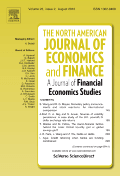
North American Journal of Economics and Finance
Elevating scholarship in economic and financial research.The North American Journal of Economics and Finance is a premier academic journal published by Elsevier Science Inc. since 1992, dedicated to advancing the field of economics and finance through rigorous research and scholarship. With an impressive impact factor and recognition in the Q2 category for Economics and Econometrics and Q1 for Finance as of 2023, this journal holds a significant position in the academic community, ranked #41 out of 317 in Finance and #100 out of 716 in Economics. The journal features high-quality, peer-reviewed articles that cover a broad range of topics, from theoretical frameworks to empirical analyses and practical applications. Though not an open-access platform, the journal provides valuable insights for researchers, practitioners, and students alike, promoting knowledge dissemination in the dynamic landscape of economic and financial studies. With its commitment to excellence, the North American Journal of Economics and Finance serves as an essential resource for those seeking to deepen their understanding of contemporary issues in these critical fields.
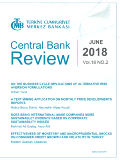
Central Bank Review
Exploring the forefront of central banking research.Central Bank Review is a leading journal published by the CENTRAL BANK REPUBLIC TURKEY, dedicated to advancing the field of economics and finance. With an ISSN of 1303-0701 and an E-ISSN of 1305-8800, this open-access journal has been serving the academic community since 2016, providing a rich source of knowledge for researchers, professionals, and students alike. The journal focuses on a diverse range of topics within economics, econometrics, and finance, making it a valuable resource for those looking to stay at the forefront of these rapidly evolving fields. Notably, in 2023, it achieved a Q2 ranking in both Economics and Econometrics and Finance, highlighting its relevance and impact within the academic community, with Scopus rankings placing it in the top quartile of its categories. Central Bank Review not only contributes to rigorous academic discourse but also offers insights and policy discussions pertinent for central banking and economic policy, solidifying its importance in shaping the future of economic research. Located in the Netherlands, this journal provides easy access to its published articles, ensuring that vital research reaches readers globally.